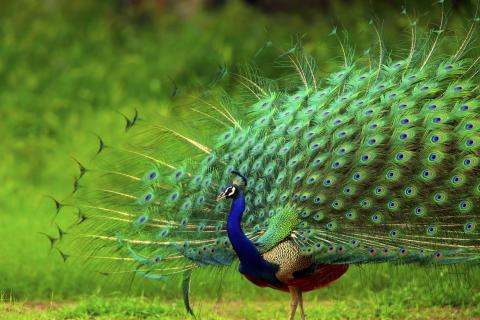Can You Name These Cryptids?
This cryptid is from the remote reaches of mountain forests across the Indonesian island of Sumatra. It is short, bipedal, and humanoid, covered in orange-colored hair. What is its Indonesian name, which translates to “short person” or “short people”?
- People in the area have reported seeing small primate-like footprints that are made by a bipedal creature, attributed to the Orang Pendek.
One of Canada’s most famous lake monsters, this serpent-like creature dwells at the bottom of Lake Okanagan in British Columbia. Do you know its name?
- Along with Igopogo (from Lake Simcoe, Ontario) and Manipogo (from Lake Manitoba, Manitoba), Ogopogo is said to be directly related to the Loch Ness Monster and has descended from the same species.
There is prehistoric evidence of large aquatic predators, but what is the name of this cryptid that might just be circling the depths of many bodies of water, ready to strike?
- Thanks to the idea of Young-Earth Creationism, some people believe that the Megalodon Shark never died out, and has adapted to survive in today’s waters as a monstrous cryptid.
A feared force in open waters for sailors and swimmers alike for centuries, which of the following cryptids takes the form of a giant cephalopod?
- The Kraken is now largely conflated with giant squids, but given the unexplored depths of the ocean, who knows what might dwell in the darkness there?
This bipedal cryptid is described as having hooves instead of feet, wings, and a goat-like head, complete with horns. It is said to live along the East Coast of the United States and within the states that lie inland— what is it called?
- One of the classic cryptid legends of North America, the New Jersey Devil is said to be an infernal creature or some kind of unholy amalgamation that is possessed by a demon.
A much-beloved cryptid native to Virginia, this creature is seen as bipedal and humanoid, with particular animalistic characteristics that give it special abilities, including incredible movement speed. Can you identify it?
- The Mothman is said to fly up to 100 miles per hour and has glowing red eyes. Interestingly, people have reported seeing Mothman accompanying several disasters worldwide, including the 9/11 attacks in America and the Fukushima Nuclear Disaster in Japan.
Throughout the farming communities of Latin America, this creature’s name sparks fear. It is described as small, with glowing red eyes, and long, sharp claws. With a name that means “goat-sucker”, what is this cryptid?
- Some reports say the Chupacabra is bipedal, standing around four feet, while others see it run on all fours. Either way, the beast leaves the carcasses of goats, sheep, cattle, and other large domestic animals in its wake, completely devoid of blood.
This cryptid has existed in Native American lore throughout North America for hundreds of years and appears as a giant flying creature. With the ability to influence weather and storm systems with the velocity of each wingbeat, what is it called?
- Thunderbirds are documented in the writings of Algonquian, Sioux, Ojibwe, and Menominee peoples, among many others, and share similar characteristics. This includes control over the weather, being godly messengers, and being saviors of humankind.
Found amid the wilds of Cornwall, this creature falls under the cryptid group of “Phantom Cats”, as it appears similar to a panther or jaguar, but has an ethereal form, making it difficult to spot. What is it called?
- Though the Beast of Bodmin Moor is a contentious cryptid, with some who believe it’s simply an escaped zoo animal or even an elaborate hoax, viewers of the Beast still maintain this phantom wild cat is a cryptozoological species.
Found in South American folklore, this cryptid is described either as a giant bipedal sloth, possibly with one eye. What is it called?
- While its appearance is not solidified, many see this animal as a South American, cryptozoological variant of the Sasquatch species.





